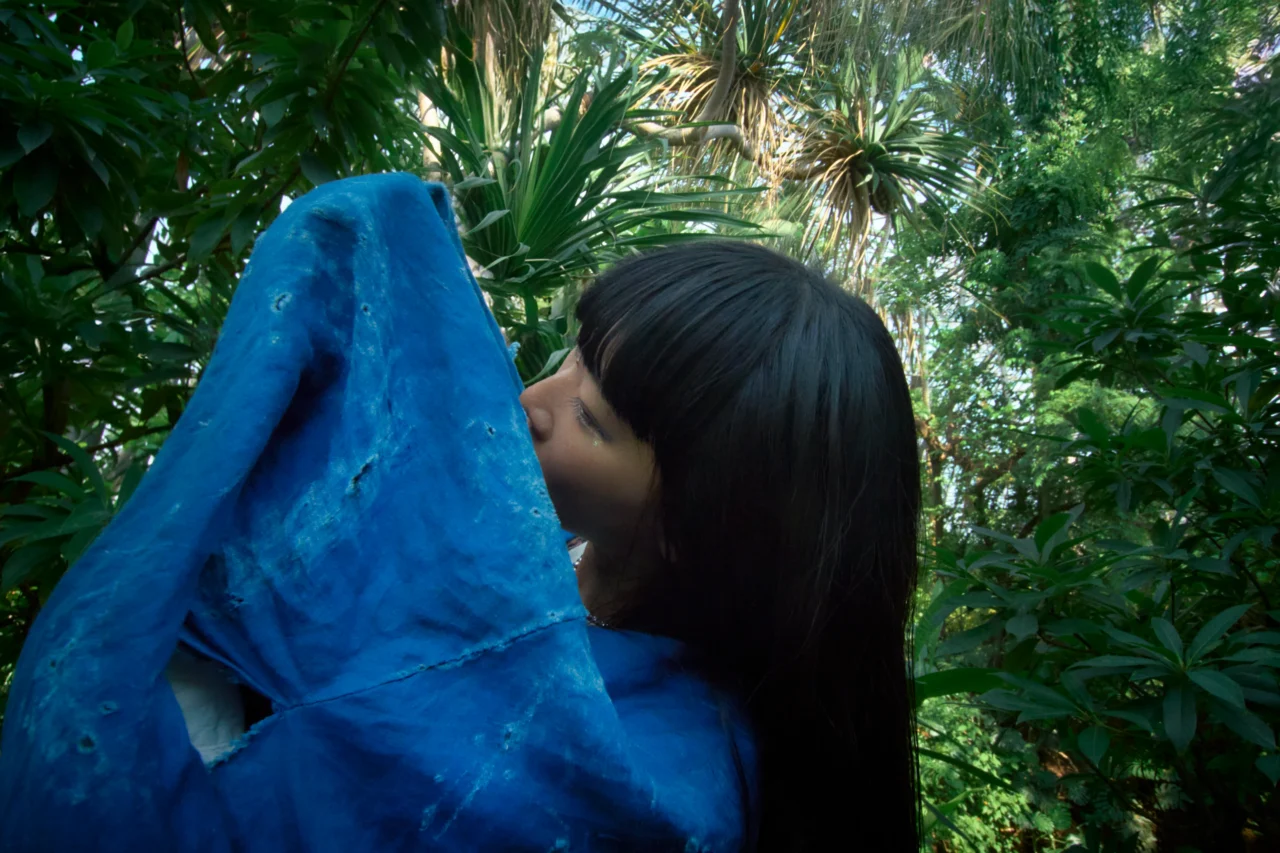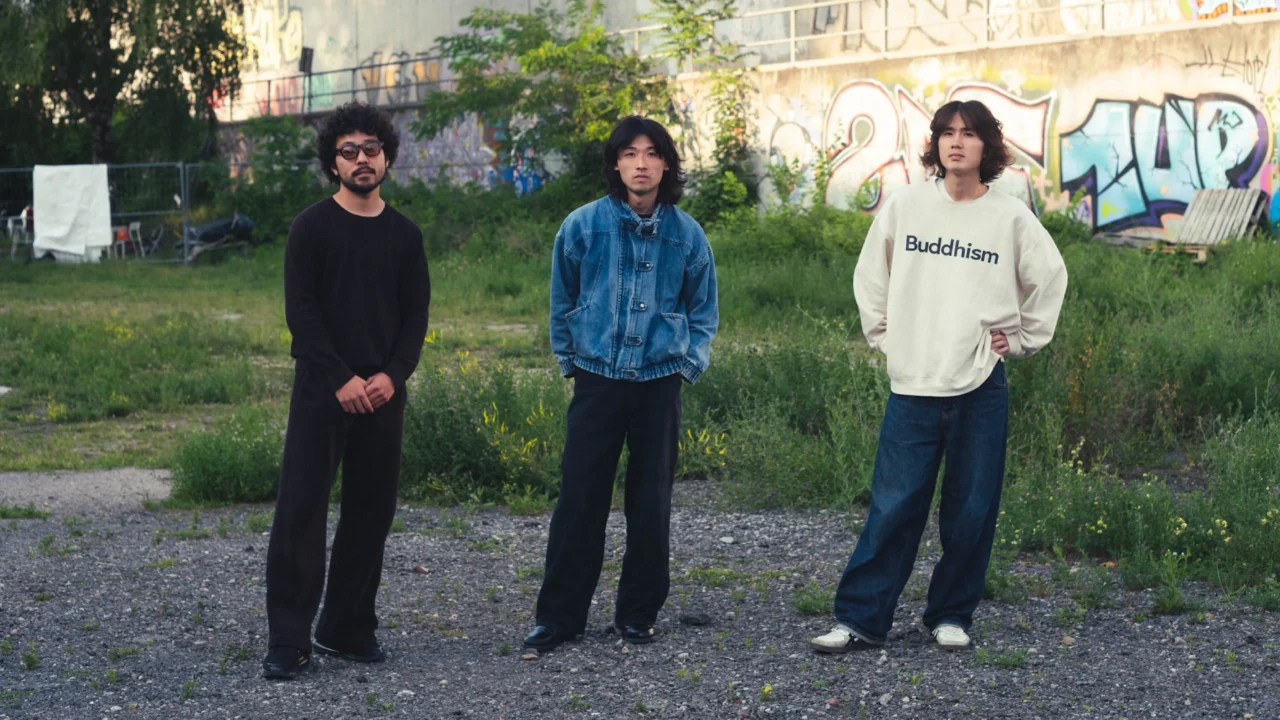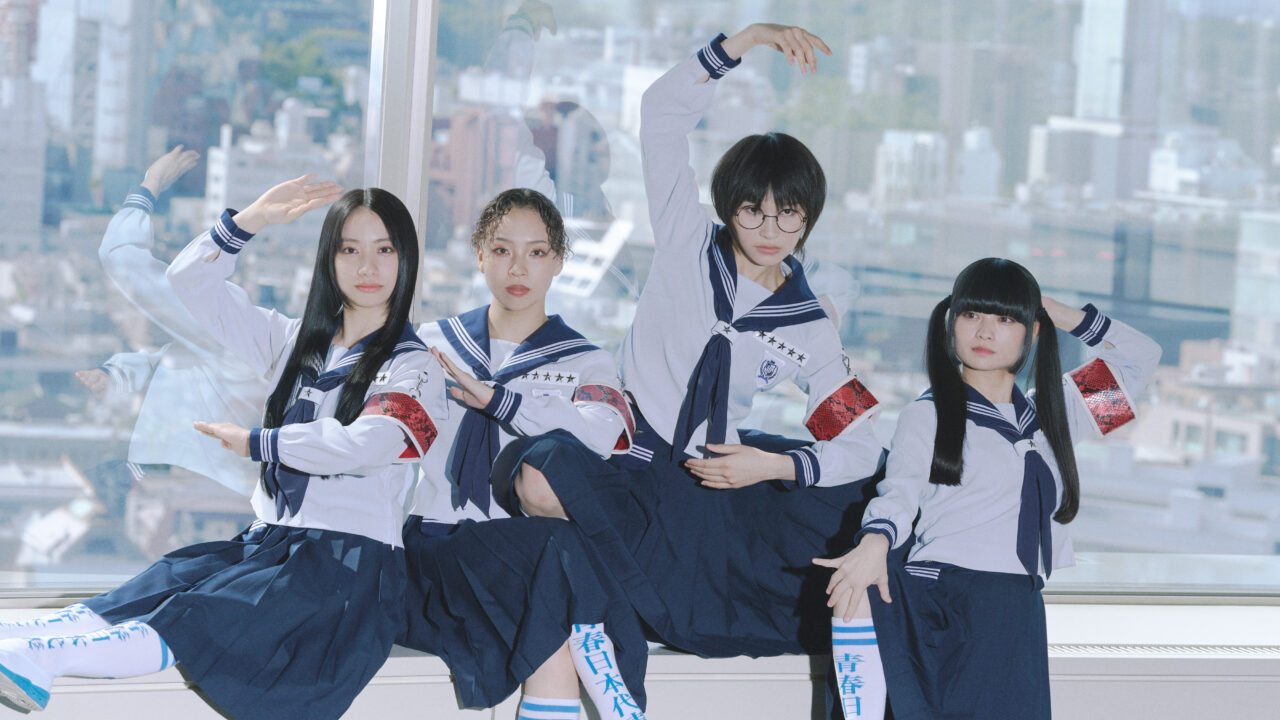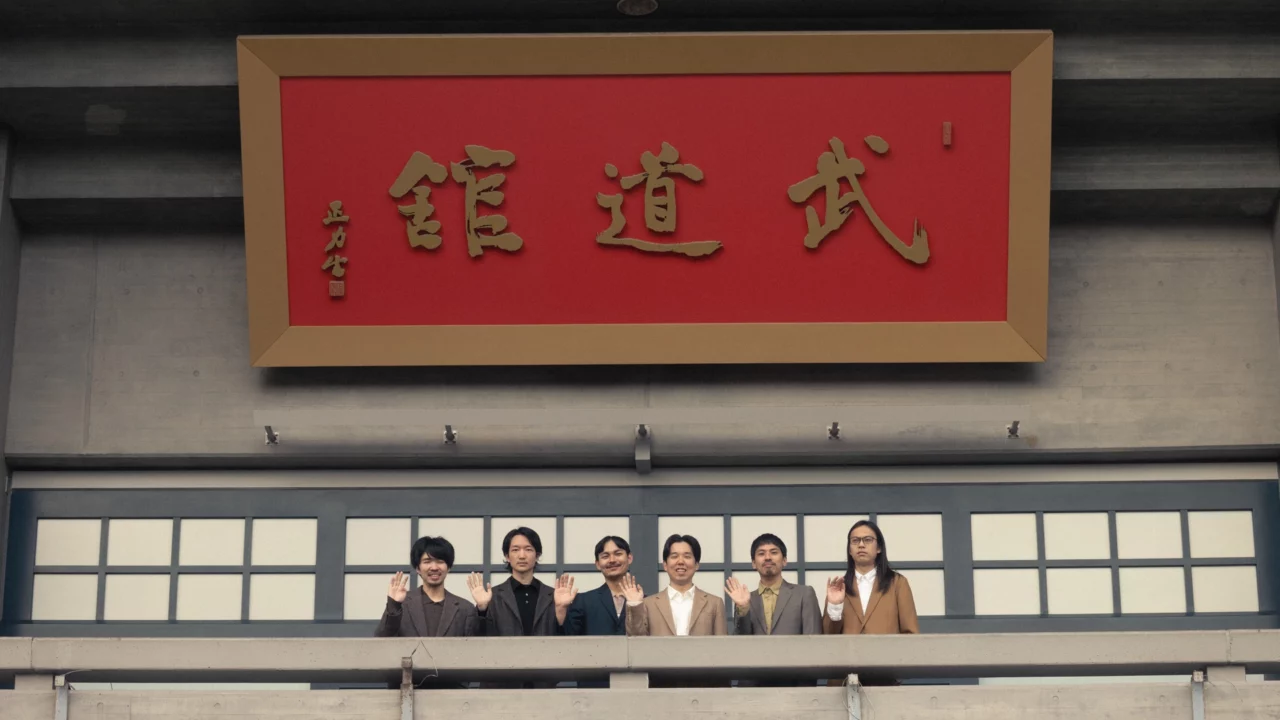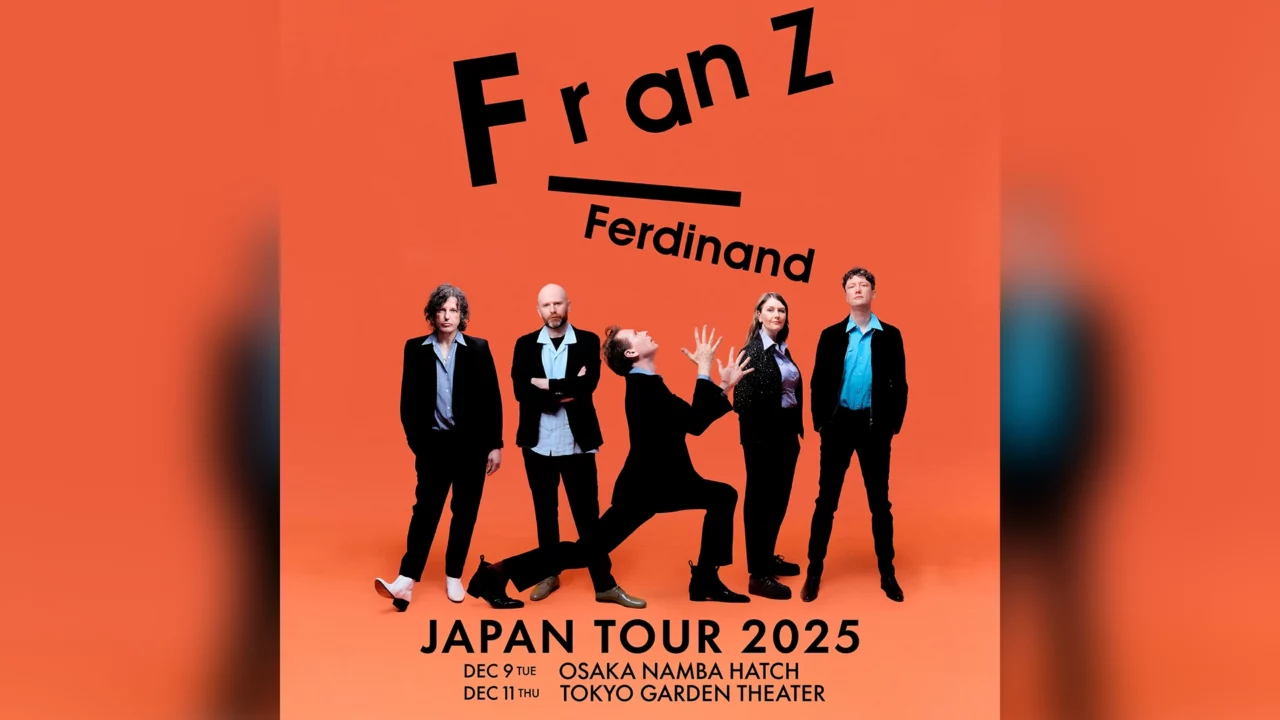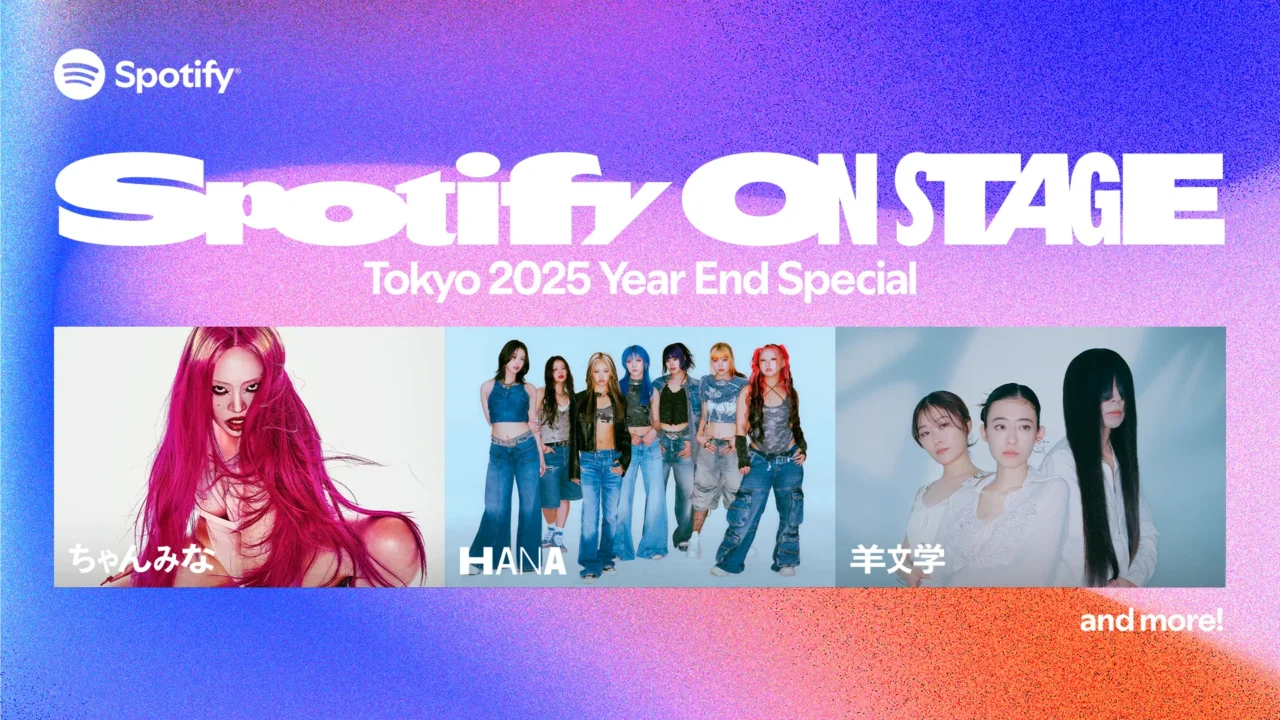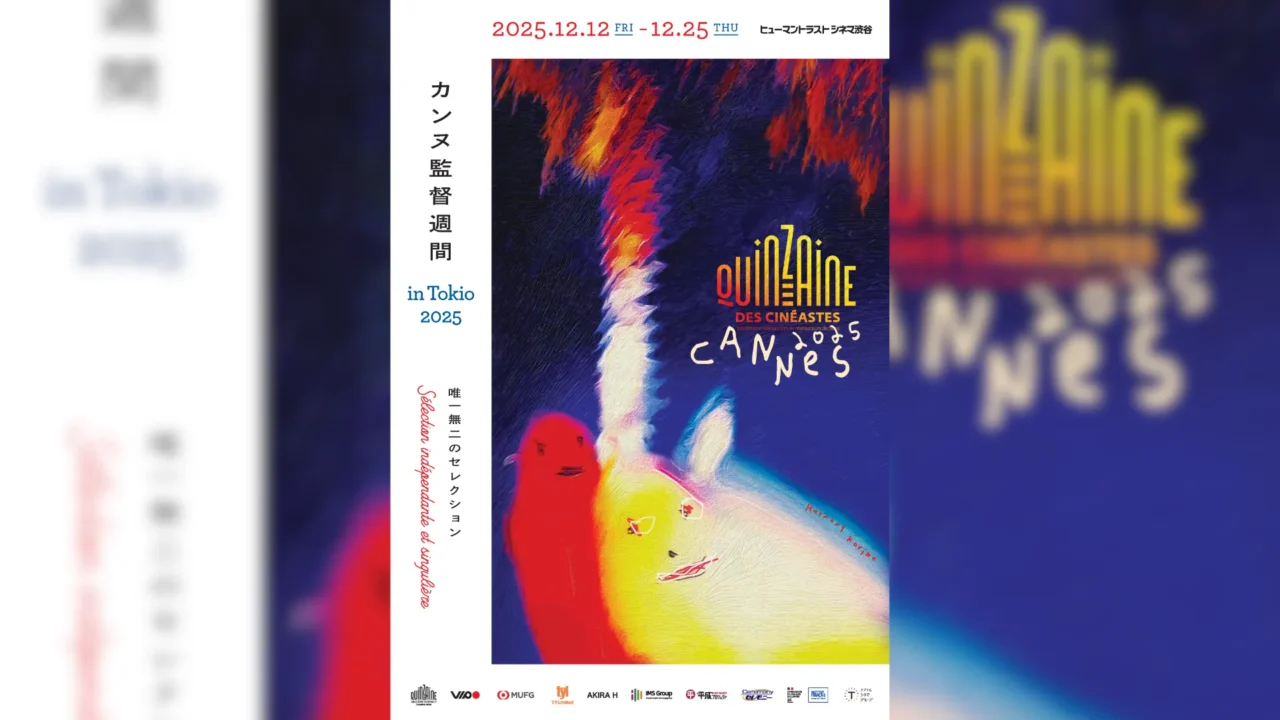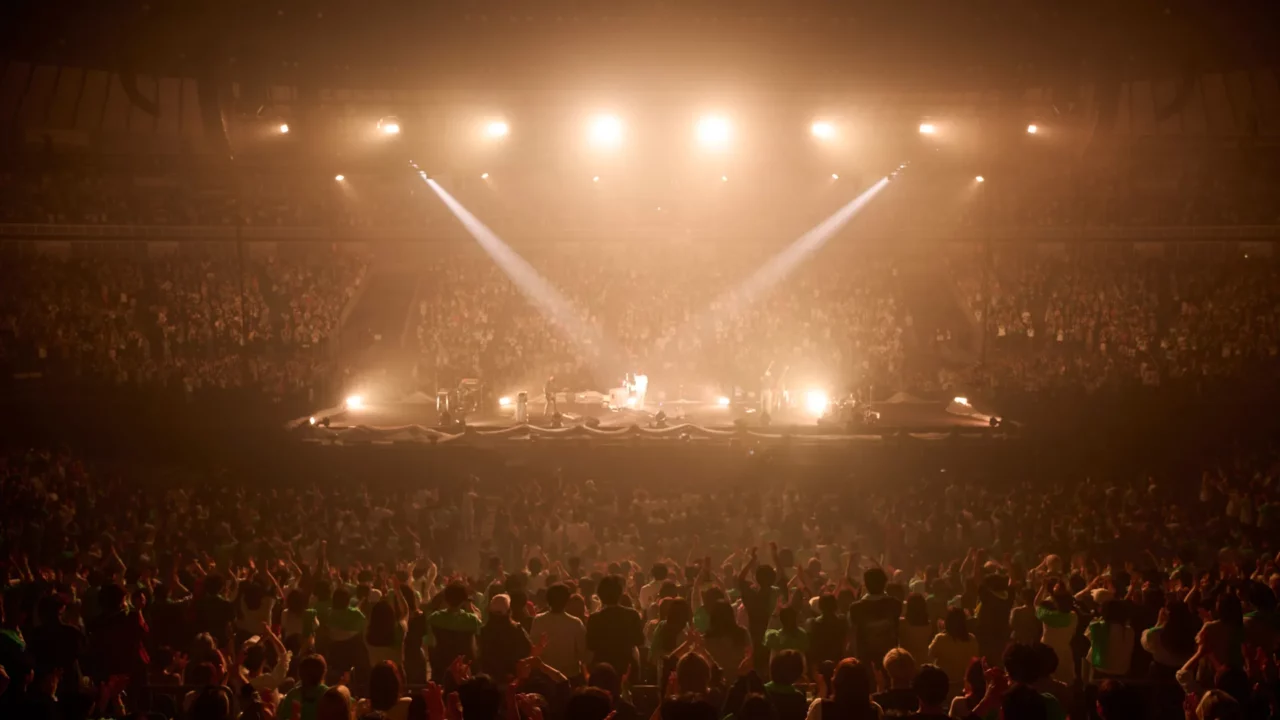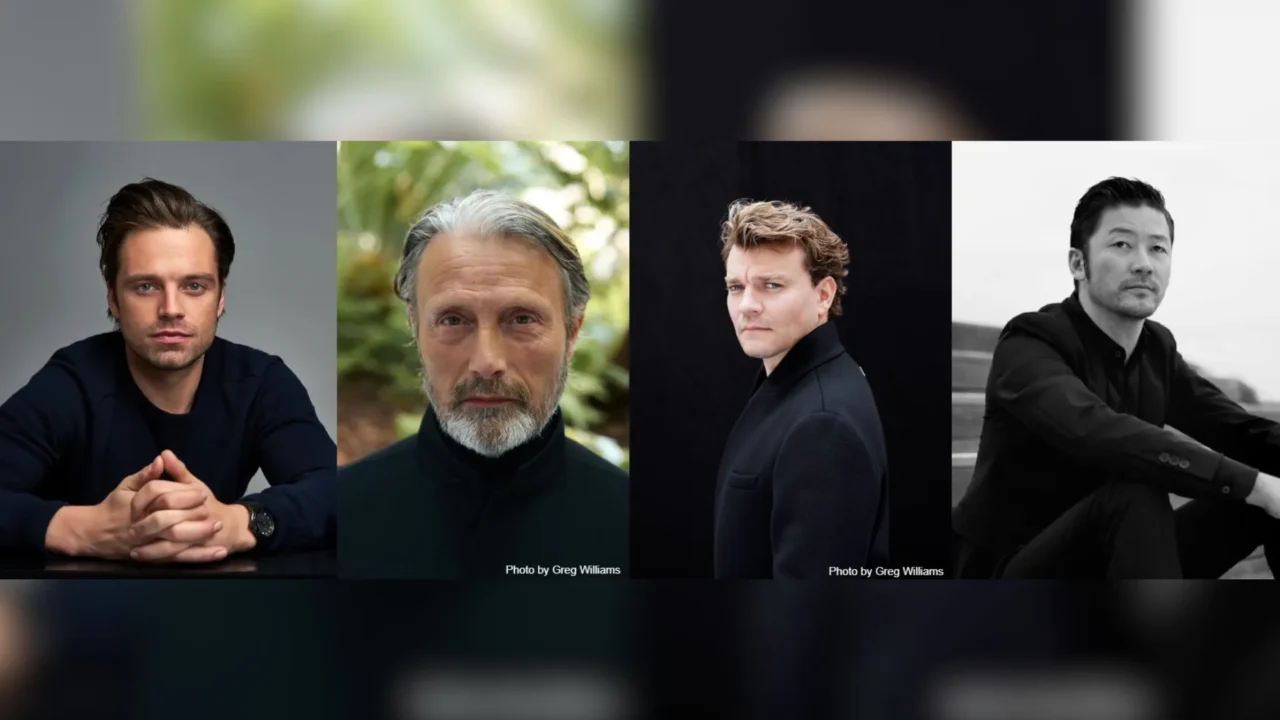In Salvador, a coastal city in northeastern Brazil pulsing with Afro-Brazilian rhythms and ancestral memory, KOM_I has found a new artistic heartbeat. Once a hub of the transatlantic slave trade, the city is now a vibrant cultural epicenter—and for KOM_I, it’s become a place of deep listening, learning, and transformation.
As she prepares for her upcoming performance at KYOTOPHONIE: Borderless Music Festival, where she’ll share the stage with Brazilian artist Felipe Cato and collaborate live with Nanao Kobayashi (FATHER), we dive into the sounds, spirits, and serendipities of Salvador that are reshaping her creative path.
INDEX
A Brazilian Kyoto? Reflecting on Salvador’s Heritage
How long have you been in Brazil?
KOM_I: I first moved in March 2024. Since then, I’ve probably clocked in a good seven or eight months here in total.

A shape-shifting artist working at the intersection of voice, body, and spirit, KOM_I channels influences from Japanese folk traditions, North Indian classical music, and the untamed rhythms of the natural world. Currently based in Bahia, Brazil, she’s immersed in writing a book born from her experience giving birth deep in the Peruvian Amazon.
From crafting the ethereal YAKUSHIMA TREASURE album with Oorutaichi, to echoing through the stone tombs of Asuka in A Dream Nestled in the Stone Chamber, and interpreting Christian Marclay’s No! at Tokyo’s Museum of Contemporary Art—her work weaves mythology, ritual, and raw emotion.
She co-founded the artivist collective HYPE FREE WATER with visual artist Minori Murata to spotlight water justice through creative action. A former frontwoman of Wednesday Campanella and an actress seen in projects like Followers and Fukudamura Incident, KOM_I continues to blur boundaries between the seen and unseen, rooted now in the vibrant cultural soil of northeastern Brazil.
So, what led you to stay in Brazil in the first place?
KOM_I: Originally, I wanted to go to India. I had been visiting India for years and studying singing with a teacher in Bangalore, so I used to tell people that I planned to spend the rest of my life there. It might sound superficial, but I was serious about it [laughs].
I don’t think that sounds superficial at all [laughs].
KOM_I: I still haven’t given up on India, but both my partner and I applied for the same grant, and my destination was India, while his was Brazil. If we both got accepted, we would go to both places. But I didn’t get in, and he was the only one accepted, so we decided to go to Brazil together. At first, I wasn’t thrilled about having to learn a new language there (since Brazil’s official language is Portuguese), but once I got there, I gradually became captivated by its charm.
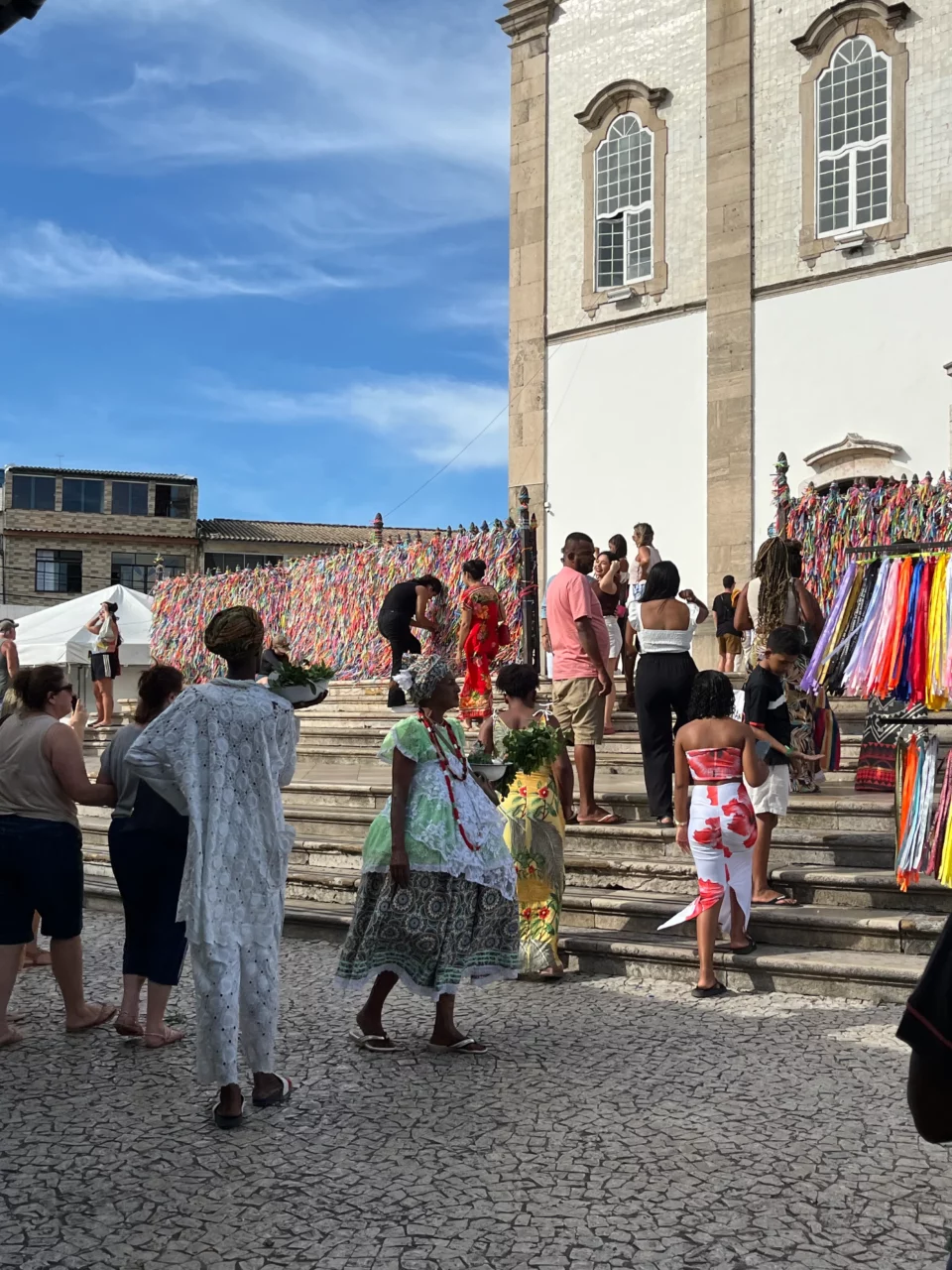
What attracted you to Brazil?
KOM_I: I’m staying in Salvador, a city in the state of Bahia, and what really captivates me is the culture. It feels like I’m touching a fountain of culture that is constantly bubbling up. Salvador is the fourth largest city in Brazil by population and used to be the capital, so in that sense, it’s similar to cities like Nara or Kyoto in Japan. Brazil has a history of slavery during the Portuguese colonial period, and people from various African countries and tribes were brought here, crammed into ships with little more than the clothes on their backs. Salvador was a major port where many of these ships arrived, so even today, the city has a significant African population. This history is the root of all the culture I am experiencing here.
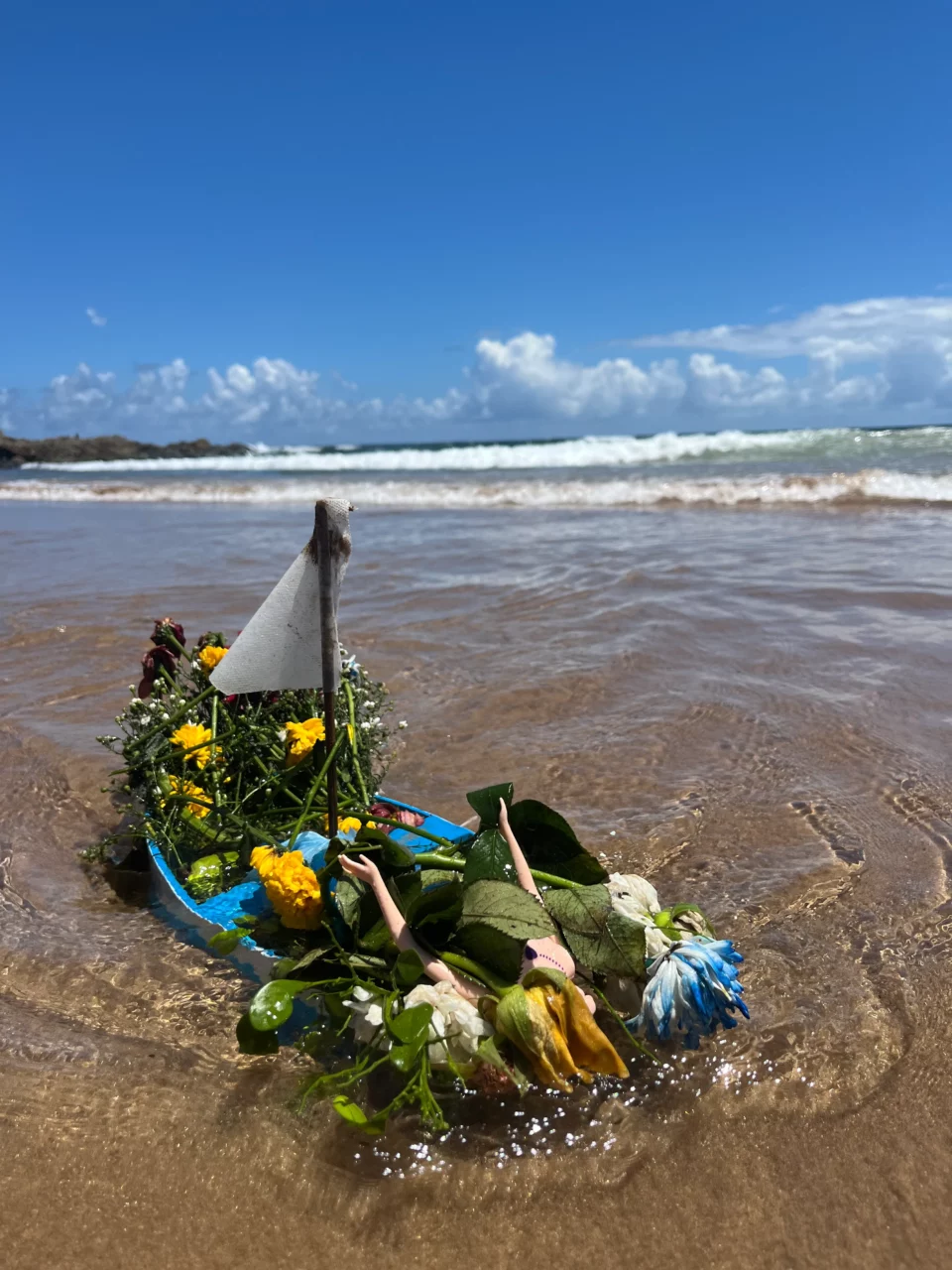
What aspects of the culture are you most interested in?
KOM_I: The roots of Capoeira, which I’m currently learning, are tied to enslaved Black people. It’s said that they developed this martial art while pretending to dance, resisting their oppressors with beauty through history. I’m particularly interested in tracing this physicality. Additionally, there’s an Afro-Brazilian religion called Candomblé, which developed among the Africans brought to Brazil, and its rituals are incredibly intense and beautiful in a way that words can’t capture. Before coming here, I really wanted to experience it, so if it weren’t for Candomblé, I might not have felt as convinced to come to Brazil [laughs].
Brazil has historically had many Japanese people, such as those who worked on coffee plantations, right?
KOM_I: Yes, that’s right. When I go to Brazil, I can’t help but think of the Japanese immigrants, especially those who worked on coffee plantations. If you look at history, after slavery ended in Brazil, they began accepting immigrants from Japan and other countries to fill the labor shortage on coffee plantations. There’s a strong connection between the African people who were brought to Brazil as slaves and the harsh labor that the Japanese immigrants were forced into. It’s deeply interconnected. So, I believe that showing respect for Afro-Brazilian history is very important for me as a Japanese person living in Brazil. That’s one of the reasons I’m so interested in the culture I mentioned earlier.
INDEX
Beach culture: A space of equality, unaffected by wealth.
Recently in Japan, we hear and see xenophobic attitudes towards people of foreign descent living in Japan. As someone from Japan staying in Brazil, what’s your personal experience?
KOM_I: From my personal experience, just walking around the streets, everyone talks to me. I’ve never felt like, “I’m a foreigner, sorry for being here.” I don’t know if people coming to Japan have the same experience, and as a Japanese person, I feel sorry about that. In Salvador, there aren’t many Asians, so I get a lot of attention. Since it’s literally the other side of the world, people often get excited and tell me, “I really love dramas,” and I have to say, “That’s probably Korean…” [laughs]. Of course, Brazil has its own issues. For example, in the last election, the current administration won by a very slim margin, so there’s always the possibility that a xenophobic or a government that undermines the rights of LGBTQIA+ people could take over. It’s a very close situation.
Something I realized now that I’m living by the ocean for the first time in my life is how equal beach culture is. When you go to the beach, you meet all sorts of people. At the beach, everyone’s in swimsuits, and though we’re dressed, it almost feels like we’re all naked. Wealthy people and those who aren’t can swim, lie down, and enjoy the beach in the same way.
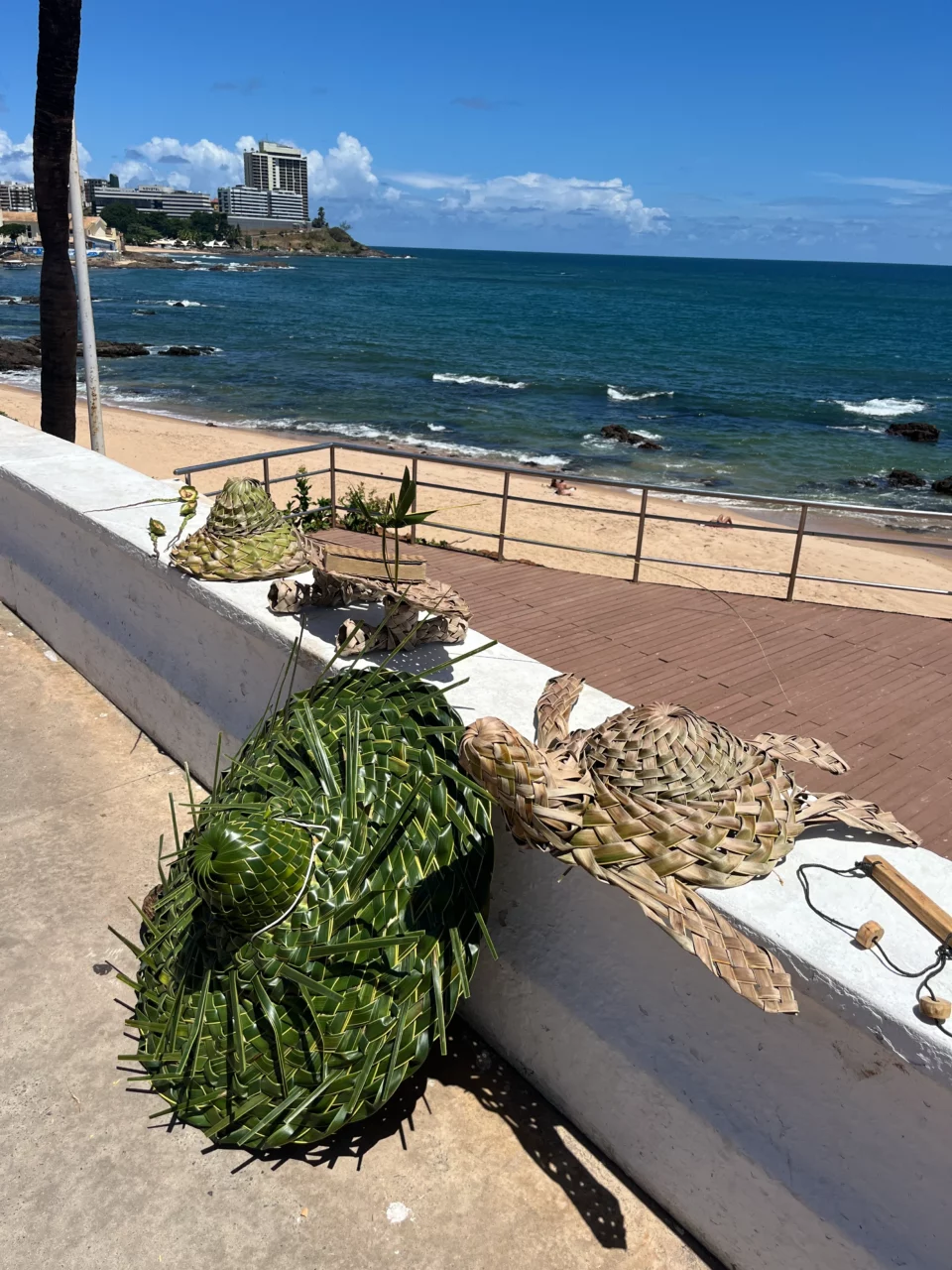
In some areas, gentrification has led to beaches being segregated for the wealthy, but traditionally, beaches are open spaces, right?
KOM_I: In Salvador, there might be places with hotels and high-rise buildings, but most beaches are public. Near where I live, there’s a slum called “Comunidade” (meaning “community” in Portuguese). People from all income levels walk by in their swimsuits, and of course, the beaches are free. It doesn’t matter whether you’re wealthy or not—everyone enjoys the beach here equally, with a sense of freedom. I’ve heard that it’s forbidden in Japan, but in Brazil, you’ll see people swimming with a beer in hand. What really impressed me was on New Year’s Eve, when everyone dresses in white and heads to the beach. Instead of going to izakayas or restaurants, people bring tables and food from home, turning the streets and beaches into party venues. They eat, drink, and when the countdown ends, we all watch fireworks in the distance, hug each other, and say, “Wow.” They’re really great at celebrating.
What kind of music do you hear during those times?
KOM_I: Everyone brings speakers and plays their favorite music. As you walk, various types of music mix together, creating a flood of sound. There’s a lot of samba, and the genre called axé is also very popular.
So, it’s music from all directions [laughs].
KOM_I: People really love to sing and dance. It’s like a karaoke box without walls. But it’s not tiring; it’s more like the music lifts your spirits. When I’m in Brazil, I feel like the cheerful side of my personality comes out more and more.
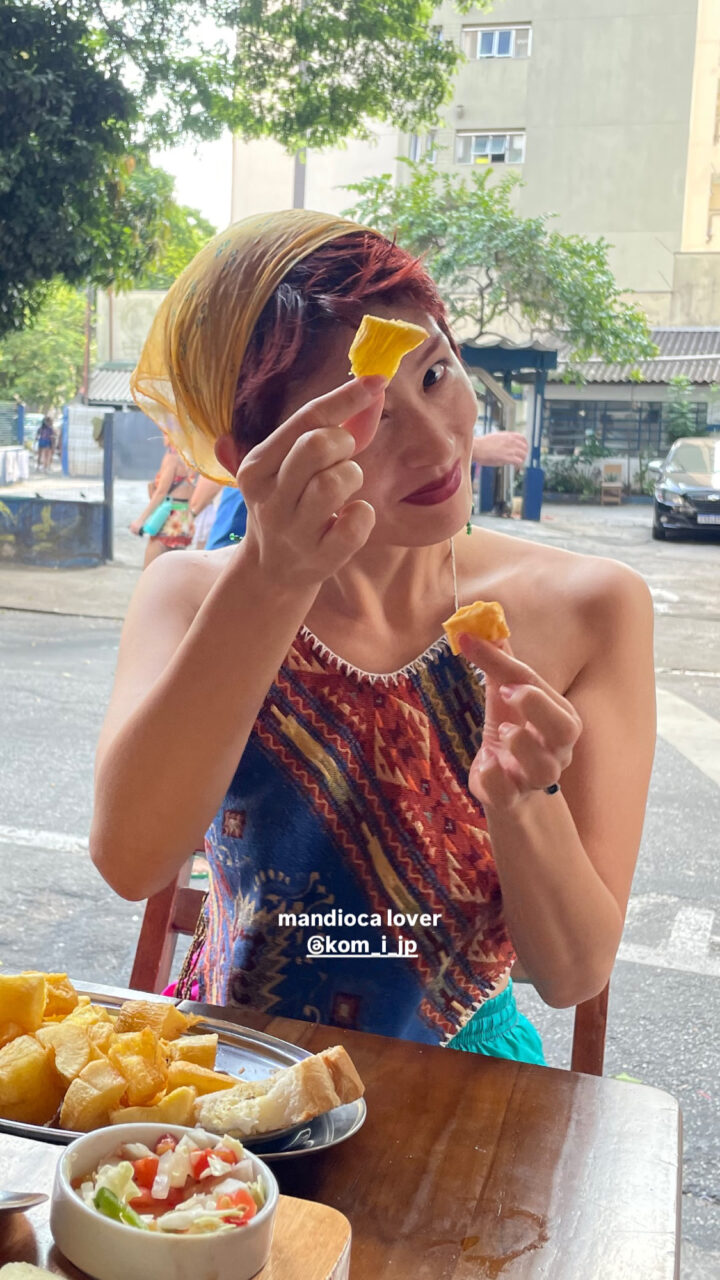
INDEX
Plenty of Opportunities to Raise My Voice as Part of the Crowd
Is singing and dancing deeply woven into everyday life there?
KOM_I: It feels like I’m always singing and dancing. There’s just an endless flow of festivals. The biggest is the Carnival in March. While Rio’s Carnival is world-renowned, Bahia’s is different—it’s all about live performances. Bands play from moving trucks, and adults, dressed in high-energy, revealing outfits, follow along, singing, dancing, and drinking. There are community-run music festivals every two to three weeks, and major celebrations like the Candomblé festival. During the Yemanjá festival, the sea goddess, the beach becomes packed with people parading together in a sea of energy.
KOM_I: There are always small music events and parades happening, and since people practice on the streets, it feels like there’s always music in the air. The sound of drums is frequent, and I have vivid memories of seeing rituals during Candomblé, where the spirit enters through the Atabaque drum and song, and the dancers move as the spirit plays with them.
In this environment, how does singing exist within you personally?
KOM_I: When doing Capoeira, we form a circle and create the atmosphere with our voices and live instruments. I’m still a beginner, but I sing along with everyone. My style is more about feeling the rhythm rather than focusing on pitch, and it’s a natural, grounded way of singing. I feel that in Brazil, there are more opportunities to join in and express your voice compared to Japan.
Apart from Capoeira, when else do you find yourself singing?
KOM_I: I went to a live performance by Caetano Veloso and Maria Bethânia, and everyone was singing along. When there’s music, I can’t help but sing along too—it’s like I’m compelled to. People aren’t too concerned about the pitch; some sing better than others, but it all adds to the richness and creates a beautiful choir. No one is mimicking anyone else; everyone is singing in their own way, so the song doesn’t really come together in a conventional sense. But that’s what makes it come together, and it’s a warm, immersive feeling that still stays with me. I know some people in Brazil might not like that approach, but I loved the passionate singing during that live show. It’s not about one person standing out; there’s a sense of unity in the voices without it feeling cramped.
Given Brazil’s history of slavery and immigration, it’s easy to draw a parallel between the country’s formation and the way each individual song exists independently, yet together, creating such depth.
KOM_I: I truly feel that way. At the concert by Caetano Veloso and Maria Bethânia, there were people from all different backgrounds, with varying skin tones and hair, different genders, and diverse roots, yet they were all singing the same song as “Brazilians.” That was incredible to witness. Now, even within Candomblé, there are many followers with Western roots who play important roles in the practice. Similarly, in Capoeira, there are so many different people, including Asians like us, who are part of the community. It’s moving to see people from all backgrounds engaging in a culture that was created by those who were once enslaved and developed as a form of resistance.
In a time when so many terrible things are happening, we can’t undo the deaths caused by massacres or war, but the fact that people have cultivated beautiful culture out of a painful history and resisted through it gives me a lot of hope.

INDEX
KYOTOPHONIE: A Collaboration with Nanao Kobayashi
In your video message for KYOTOPHONIE, you spoke about how your performance will explore both the darker and more beautiful sides of humanity. Now that you’ve had the chance to experience Brazilian culture, how do you envision your performance for KYOTOPHONIE evolving?
KOM_I: My performance draws deeply from the sights, sounds, and lessons I’ve gathered from various parts of the world. These moments of inspiration serve as my creative foundation, and I want to bring them to life in a way that feels true to my journey. Since leaving Wednesday Campanella, I’ve been focusing more on improvisation, almost like pulling from a grab bag of ideas in each moment. For this performance, though, while there’s still an element of spontaneity, I’m aiming for a more intentional structure, working towards a clear, more refined vision rather than just embracing uncertainty.
Collaborating with Nanao Kobayashi must add a special dimension to the performance. How do you think your work together will shape it?
KOM_I: Absolutely. What excites me is the synergy we’ll create together, something that could only happen between the two of us. Our collaboration will bring a unique energy to the performance, and I’m eager to see how that unfolds.
You mentioned that you often hear drum sounds in the streets of Salvador.
KOM_I: The reason I’m collaborating with Nanao Kobayashi this time is not only because I find her as a person very interesting but also because I’ve been deeply drawn to drums. Her performances with electronic instruments and the three-dimensional pieces she creates through embroidery are amazing. She creates with a focus that seems beyond human capabilities. We’ve been looking for an opportunity to work together for a while, and when the chance came for us to perform at ‘KYOTOPHONIE,’ it felt like the perfect match. When I first spoke to Nanako, she mentioned that she’s not great at accompaniment, and I thought, “Yes, we’re both lead elements.” It’s fascinating because the drums provide a foundation, and the vocals layer on top. That’s why I feel so drawn to the way Nanako plays drums, with each sound so deliberate and precise.
You both have very different musical backgrounds, don’t you?
KOM_I: There are things we share, but our approaches and perspectives are incredibly different. I focus more on expressing emotions and sentiments through sound, while Nanako seems to approach things from a more structural or cosmic perspective. It’s not mechanical; it’s very alive. I think that’s what makes it so cool—it’s completely different from my own style.
Felipe Catt, who is performing from Brazil, will also be part of the show. It will be his first performance in Japan, right?
KOM_I: I’m really looking forward to meeting him for the first time. I’m sure that at his concert in Brazil, the crowd is so passionate that you probably wouldn’t be able to hear anything else but people singing at the top of their lungs (laughs). Through Felipe, I’ve gotten to learn a lot about Brazilian music, especially the songs he covers. That has been so exciting and inspiring for me.
KOM_I with FATHER × Soundscapes from Brazil & Beyond
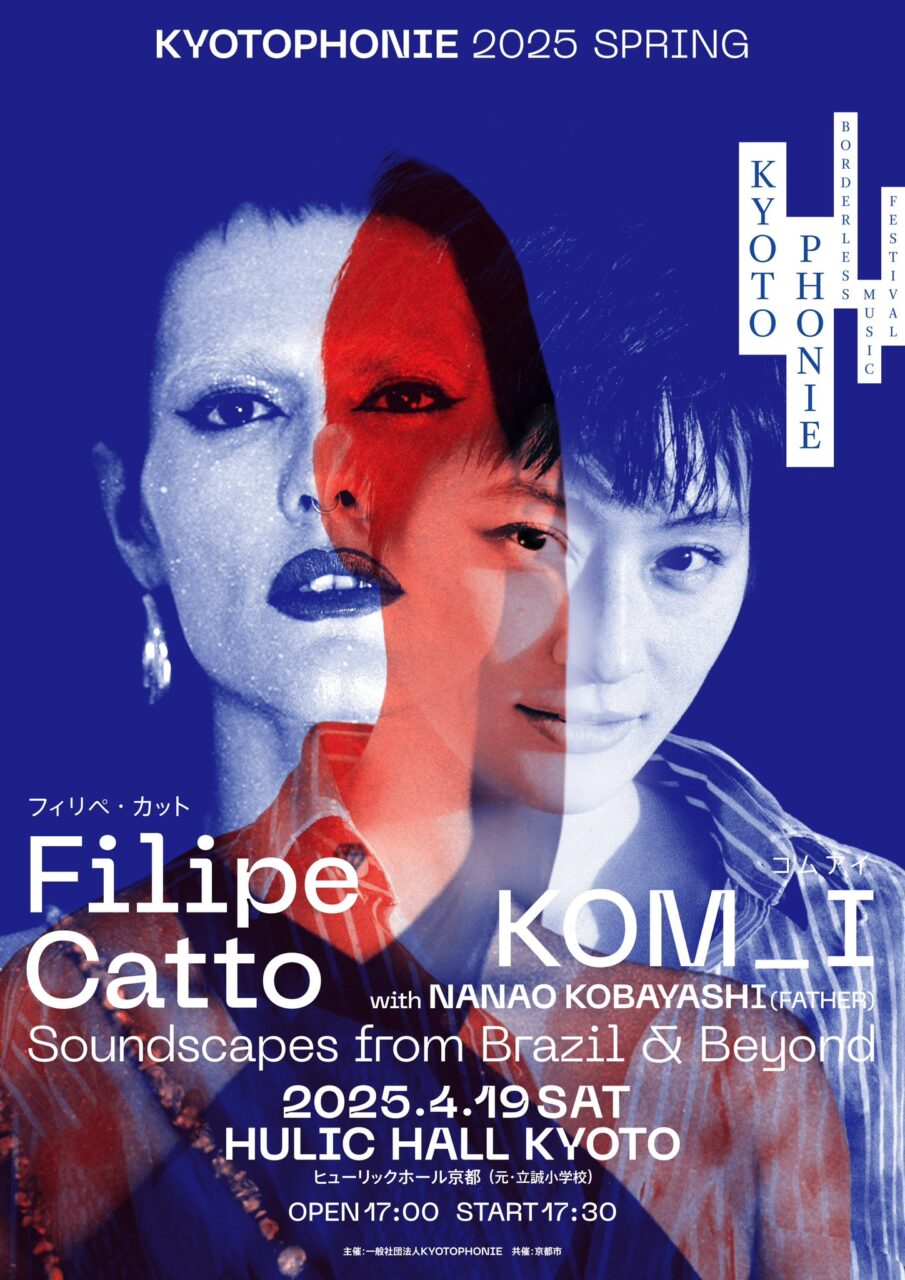
Performance Date: April 19, 2025 (Saturday)
Doors Open: 17:00 / Performance Starts: 17:30
Venue: Hulic Hall Kyoto (formerly Rissei Elementary School)
Tickets:
- Advance: ¥5,000
- At the door: ¥6,000
Domestic: https://eplus.jp/sf/detail/4277620001-P0030001P021001
International: https://kp-komi-cato.peatix.com/






